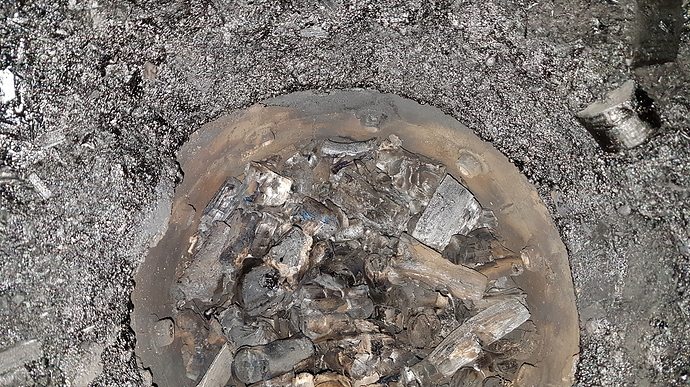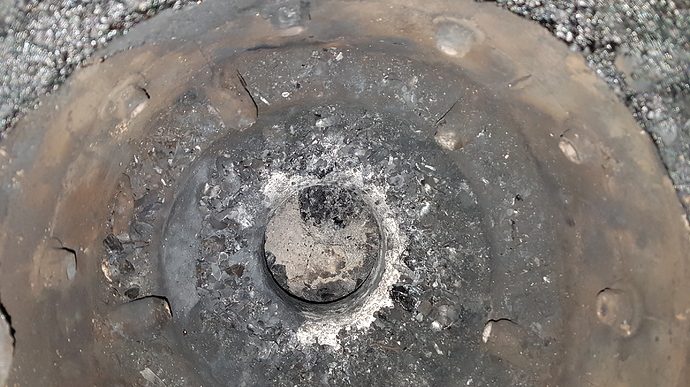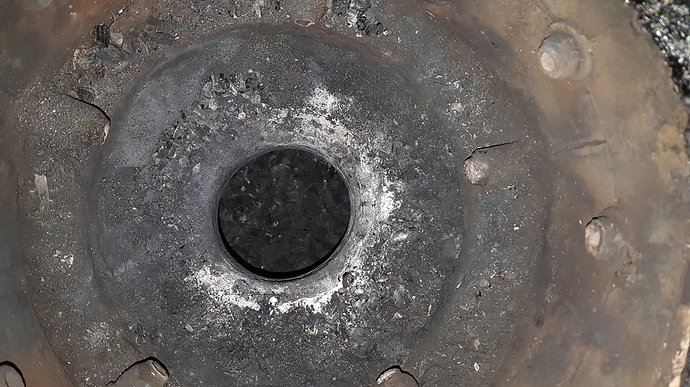You’re right. It didn’t fit very well ![]()
Hi Jo
if the PWM controls the emissions of co, it is that the spraying of gasoline must remain good .![]()
do variations in the PWM vary the RPM of the motor?
I think fuel spray pattern isnt all so cruicial, after all, a carbourator uses none and isnt so teribly worse at emisions.
Hi Thierry,
What @KristijanL said.
I think regular mpfi engines spray short enough bursts to maintain a fine spray pattern even at slightly lower pressure.
The Rabbit engine had constant fuel spray (and so does Kristijan’s MB). That kind of injecton is known to make the engine run ruff at idle when injectors get dirty.
Yes, too rich and too lean conditions lower the idle rpm. Right in the middle, or slightly lean, makes for the highest rpm. Same as adjusting a carb nozzle.
The finer the spray, the more complete the burn is. It results in increase performance hp/efficiency, and reduces emissions. Will it work? yes, but not as efficiently as a finer mist will, the fine mist evaporates faster because of increase surface area of the droplets. Fuel Injection replaced Carburators because they can get more HP out of the same sized engine because it results in a more evenly distributed evaporated mixture, which gives a more complete burn.
It is actually a similar principle to irrigation. If you use spray irrigation or a sprinkler hose on a hot day, you can lose 50% of the water due to evaporation. The fine droplets of water will evaporate before hitting the ground.
Ofcorse, but the difference is not so astronomicaly great. Based on tech specification of some engines l looked at prior to my Mercedes purchase, the power gain from carbourator to injection on a same engine usualy stays around 5%. Its a pitty to waste, yes, but all l wanted to say is the engine will still run well and clean at low fuel pressure.
Yes, it will work. It reminds me of a story, where someones fuel pump broke and they dripped gas into the air intake to get it home. Then the discussion devolved into using a wick instead of having someone sit in the engine bay.
On this fine-gasoline-spray talk . . . like ALL things, there are diminishing returns; with down-side affects.
The extreme fuel-use efficiency is full pre-vaprozation. Extremely tweeky for temperatures and engine load changes! Very,very prevalent to go-boom back up into the intake system. Vaporized gasoline is evil wicked.
The GEET system was not full vaporization. Sonic particle-i-zation. Poor full load power. Poor load change response. Tweeky.
Float bowl carburetors were capable of excellent power and steady state fuel use economies. Warming up to stabilization problems and still cold emissions. Needed expensive added on system for traveling altitude changes. Needed added on sitting hot vaporizing off blocking/capturing systems.
Throttle body fuel injection with electronic controls solved most of these.
PORT/individual runner in-the-intake injectors allowed for faster cold stable idles and emissions. But with the engine fuel delivery now split up four, six, eight ways the finer injectors nozzles would clog up sooner versus later. Needed higher refined levels of gasoline’s. Finer/more restrictive on-board filters requiring more powerful electric fuel pumps. Still. 4-5 years; 40-60k miles and the injector tips would buildups spray poorly. So the additional additives to gasoline to “fight” injector deposits.
It was determined to be the gasoline fuel components were degrade-changing being recycled again and again past the warm-hot on engine fuel line pressure orifice slit. So. On to the one-line returnless systems. The fuel pressure regulators moved out of hot engine compartment into/onto the in-tank fuel pump/suction sock assembly.
Then onto GDI. Gasoline directly injected into the combustion chamber. Similar to a diesel. Tiny bit better power. Tiny bit better fuel use economy. Seemed it would be even better emissions capable.
Again big consequence problems encounter in world-wide service conditions. You can search these out yourselves.
The smart engine system designers have reverted to Port injection for under best-use conditions with GDI as best-use part time. Expense and complicated dual systems then.
Third world gasoline’s, DIY liquid mixed substitutes, you really want a large orifice carburetor mixer system. An old dumb mostly mechanical CSI Bosch/Denso system.
From there UP in idealizing you will have driven needs for better and better Tiered Spec grade fuels.
And these are not just net-looked-up opinions. The hard learned opinions of hard working keep-it -running field-mechanics and field-technicians.
If you insist getting an angel to sit on the head of a pin . . . one angel; and he can be big, dumb, fat and a bit happy-raucous.
The more angels crammed on: and then they Must be much smaller, uniform-bland, close-quarters friendly, and extremely complaint.
tree-farmer Steve unruh
Thanks for this enlightning clarification Steve! You are defenetly the guy that knows his thing.
Bottom line. JO sayd it before, woodgas is so much simpler 
O.K. For the very best GDI link in my opinion read here:
https://www.enginerebuildermag.com/2017/10/solving-gasoline-direct-injection-issues-facts-fictions-gdi/
The Mazda has been acting a little sluggish lately. Especially as long as the gasifier is not up to temp. Kristijan suggested emptying the bottom ash outof the gasifier. 4,500 miles and I’ve been emptying only the cyclone collector so far.
Started with running the wood down below nozzles last night.
After vacuuming the char out I discovered a packed pile of bottom ash reaching almost all the way up to the restriction. Between 12 and 3 o’clock seems to be where I’ve punched my poker down at lightup lately.
Ash is vacuumed out. Nozzles and firetube protective shields seem pretty much unaffected. All good.
Took the Mazda for a gentle drive, no racing. With only clean fluffy char I could easily empty the gasifier into the cyclone. I expect to be back to normal after next lightup.
Next will be fluffing the hayfilter. It seems my vacuum guages don’t respond as rapidly as they used to. Mr @Wayne, do you use a special tool or trick to do that without making a mess. I don’t use laundry bags.
Steve, that link doesn’t seem to work…
Sigh. As is normal for me, my hand trasfered links often do not work.
Search up “GDI problems” to find a direct article link.
The 'best" because it is written by an actual working engine rebuild restorer. I worked in the automotive component rebuilding field for 16 years. You are forced to become an unpaid in-field system improvement engineer or be put out of business bankrupt. You do not get to play around with the complete system. Only upgrade/improve for service your one component.
This article very much related to wood and charcoal conversion of vehicles.
The Positive Crankcase Ventilation system tie-in effects.
With gasoline carburetors and throttle body fuel injectors you had gasoline droplets wash continuously cleaning the intake systems and intake valve heads.
Port fuel injection lost the intake/plenum cleaning of the PCV vapor sucked-in crap build-ups. Then leading to the need for “Intake/Inductions Systems Cleaning” as a time/mileage newly needed service. Port fuel injection did still gasoline droplet clean (and cool) the back side of the intake valves.
GDI does not.
Accumulating baked on crankcase vapors crap building up on the intake valves backsides now as a super hard crust then upsetting air-in flows volumes and directions. Computer control cannot compensate.
O.K. Now sounding woodgas familiar?
He details out engine rebuilding with added costs deposits resistant coatings and such.
Finished with the strict need to emphasize to vehicle owners the need for more frequent severe service oil changes to reduce to a minimum the PCV crap sweeping up into the intake.
And using the manufacturers spec grade of engine oil.
Even scary to us oldsters, 0-20W and such; new-spec motor oils even though these cost more. These new engine are CNC manufactured to super tight clearances! Old comfortable-safe spec oils will kill them.
S.U.
Thanks for the report! What was the ash under the restriction like?
The ash was packed but crumbles between my fingers like a beach sand castle. No signs of slag.
I think the ash packing has to do with steam in the gas. A WAG is my hopper condencing is about half as good as a WK-tube hopper.
This is how I imagine I’ve been running lately.
Howdy,
Does this work?
TerryL
Tanks Terry, it does.
Yep, it was the same with me. Only more often. This is the “slag” l usualy saw in my wood gasifiers.
I dubt that. Temps get above boiling down there fast. I wuld say its just heat and ash slowly sintreing together.
Aha, you think so? Now that you mention it, it’s granular, like sand. Not as soft as ash.
Well, if I can manage several thousands miles between cleanouts it’s not a huge problem.
Hello JO
No tricks but I guess you could reach down in the hay with some type hook and pull the hay up while washing with water hose or buckets of water.
I followed Carl Zinn on the laundry bags and have been using them a few years and really like them .



